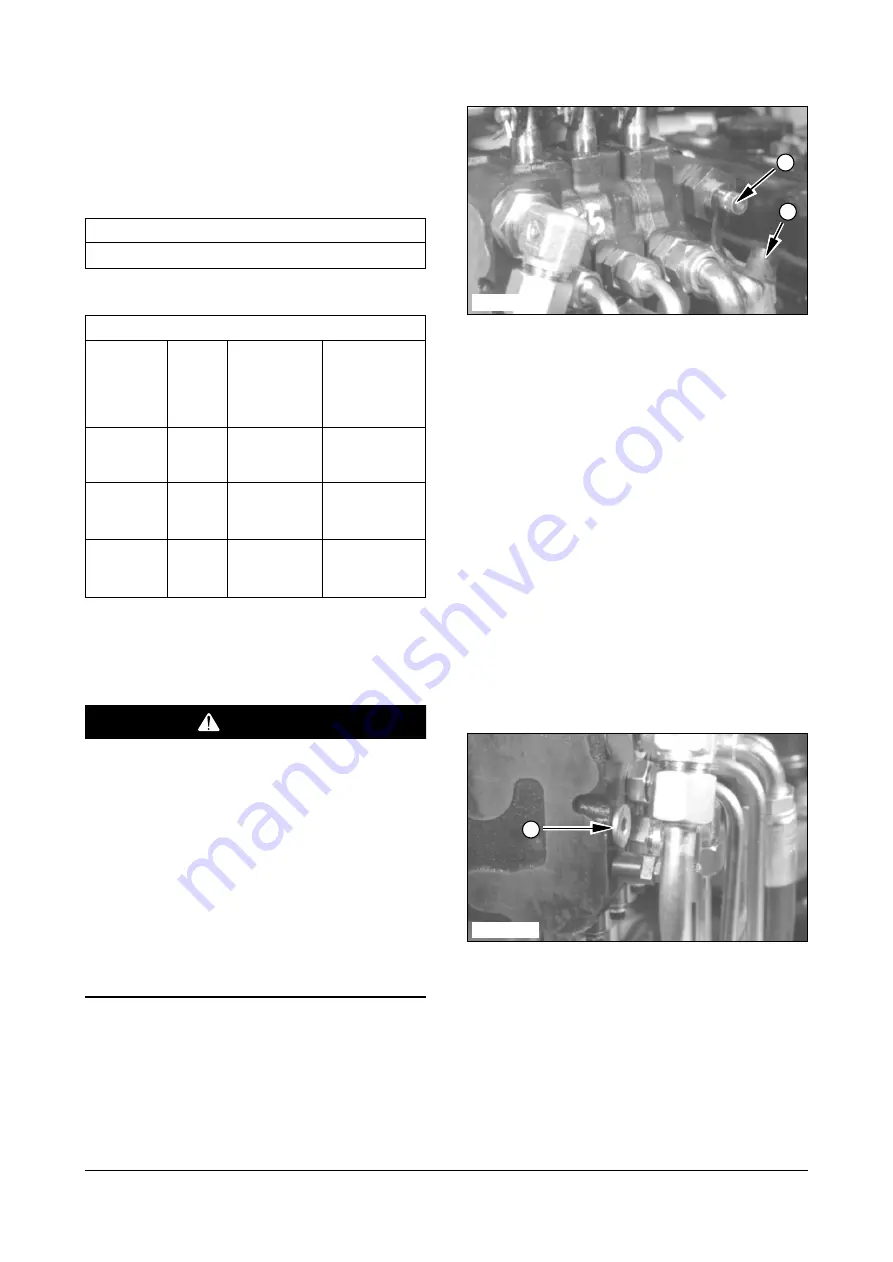
Hydraulic System
Relief Valve Pressure Check
Use the Fittings Group to check the relief valve
pressure.
Pressure Tap Location
(1) Cap. (2) Nipple assembly.
With the engine off, remove cap (1) from nipple
assembly (2) and connect the 28,000 kPa (4000 psi)
gauge to the nipple assembly.
Lift Relief Valve Check and Adjustment
1. Start the engine and activate the hydraulics until
the hydraulic oil is at the normal operating
temperature. Tilt the mast back to the end of its
travel.
2. With the engine at high idle, hold the tilt control
lever in the tilt back position and watch the gauge.
The gauge indication is the pressure that opens
the relief valve.
3. The correct pressure setting is shown in the chart.
Relief Valve Adjustment.
(3) Plug.
23 of 29
New Hydraulic Systems
Testing and Adjusting
Tools Needed
Fittings Group
CONTROL VALVE
Tilt, Auxiliary
Relief Valve
Pressure
°æ 350 kPa
(°æ 50 psi)
15,500 (2250)
15,500 (2250)
15,500 (2250)
Main Relief
Valve
Pressure
°æ 500 kPa
(°æ 75 psi)
18,100 (2625)
19,500 (2825)
21,550 (3125)
Mast
Std
FFL
FFTL
Std
FFL
FFTL
Std
FFL
FFTL
Model
D(G)20(S)
GC20(S)
D(G)25(S)
GC25(S)
D(G)30S
GC30S
WARNING
Hydraulic oil, under pressure can remain in the
hydraulic system after the engine and pump have
been stopped. Personal injury can be caused if this
pressure is not released before any work is done on
the hydraulic system. To prevent possible injury,
lower the carriage to the ground, turn the engine off
and move the control levers to make sure all
hydraulic pressure is released before any fitting,
plug, hose or component is loosened, tightened,
removed or adjusted. Always move the lift truck to a
clean and level location away from the travel of
other machines. Be sure that other personnel are
not near the machine when the engine is running
and tests or adjustments are made.
IDCS001C
IDCS002C
2
1
3
Summary of Contents for D20S-2
Page 8: ......
Page 13: ......
Page 24: ...27 of 29 New Hydraulic Systems Disassembly and Assembly IDCS015B...






























